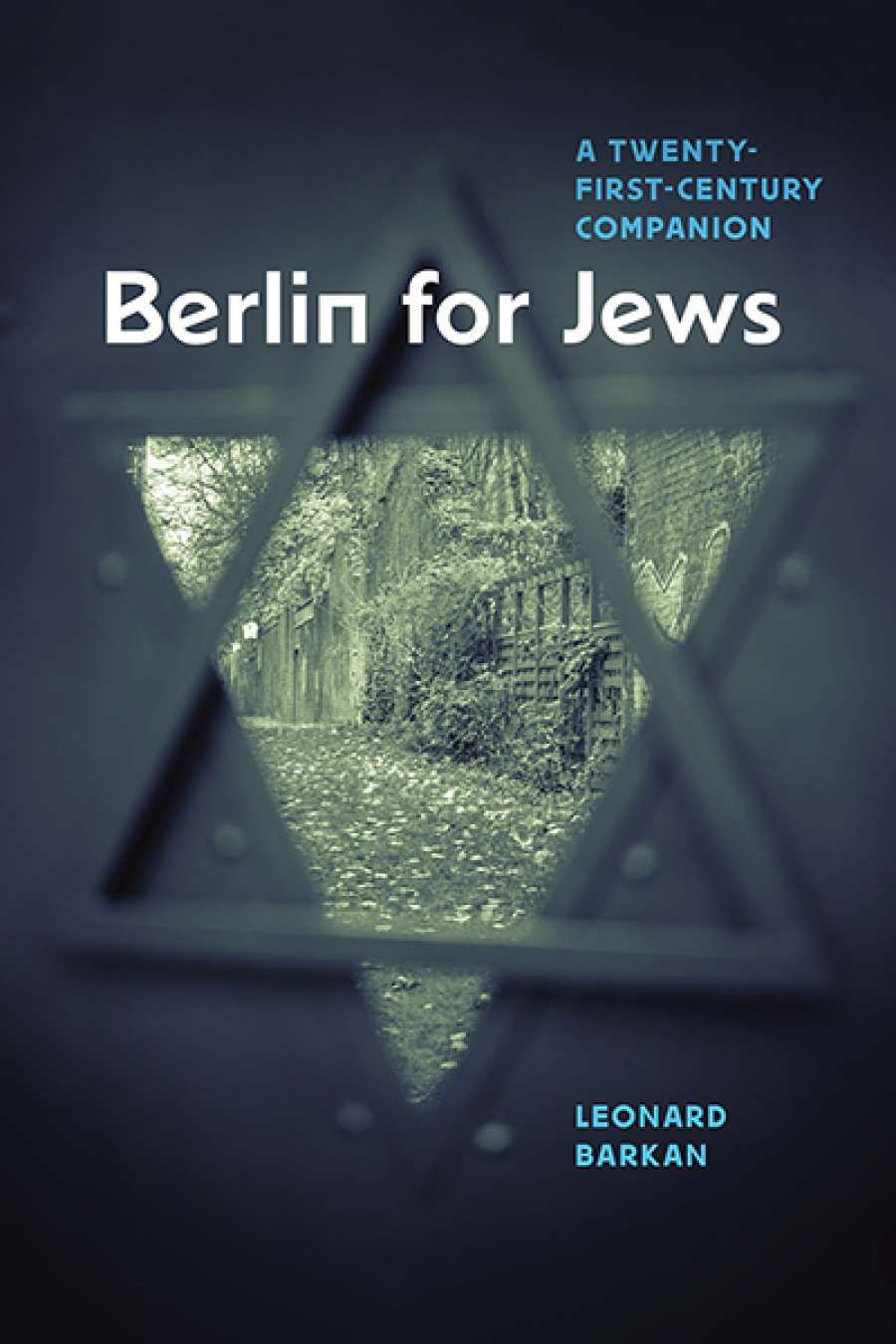
- Free Article: No
- Contents Category: Jewish Studies
- Custom Article Title: Andrea Goldsmith reviews 'Berlin for Jews: A twenty-first-century companion' by Leonard Barkan
- Book 1 Title: Berlin for Jews
- Book 1 Subtitle: A twenty-first-century companion
- Book 1 Biblio: University of Chicago Press (Footprint) $55.99 hb, 191 pp, 9780226010663
Barkan, a secular New York Jewish professor in the Department of Comparative Literature at Princeton, describes himself as having ‘less than ten years ago, fallen in love-at-first-sight with Berlin’. Like many late-blooming lovers, he derives great pleasure in sharing his love; and, as so often happens, a passion so obvious to the besotted readily loses something in its transmission.
Barkan begins by selecting two Berlin locations to reveal the rich and varied history of Jewish Berlin. The first of these is the Schönhauser Allee. Barkan stops at graves, he reads epitaphs, and he mentions a raft of men and women, most of whom are not well known. Each of these people receives only a few sentences. While it might be different if I were walking the cemetery with Barkan’s book in hand, at home in my study, these fleeting references gain no traction, nor do they cumulatively provide me with a sense of nineteenth-century Jewish Berlin. (Is it not the case that the best travel guides are those that take one on a vibrant and utterly compelling journey without the need to leave home?)
Next, Barkan guides the reader through the Bayerisches Viertel, the Bavarian quarter once home to Einstein and Born, Erich Fromm, Wilhelm Reich, Fritz Perls, and many others. As Barkan briefly notes, most of these people were direct descendants of German-Jewish emancipation as well as the Jewish Enlightenment known as the Haskalah. I find myself eager to read more about the circumstances that permitted so many Jews to be so productive despite pervasive anti-Semitism, but this does not gel with Barkan’s personal journey. Indeed, I am discovering that Berlin for Jews is not the unique hybrid of travel guide and intellectual history that I had anticipated.
 A street in Bayerisches Viertel (Wikimedia Commons)
A street in Bayerisches Viertel (Wikimedia Commons)
In his last three chapters, Barkan focuses on three Jewish Berliners whom he portrays as ciphers to the city: Rahel Varnhagen (1771–1833) who ran her famous Berlin salon for three decades; the industrialist, philanthropist, and patron of the arts James Simon (1851–1932), and the social philosopher Walter Benjamin (1892–1940). With his three Berliners, Barkan highlights the paradox of being a German Jew or rather a Jewish German and the contradictions involved in such an existence. This is one of the most interesting aspects of the book, but again it is touched on only briefly.
In his long epilogue, Barkan discusses what he calls Berlin’s Jewish ‘competing star attractions’: Daniel Libeskind’s Jewish Museum and Peter Eisenman’s huge Holocaust Memorial with its maze of tomb-like structures. The former he considers far too directive in what the viewer is supposed to feel and understand, while the latter is too abstract. He far prefers the Stolpersteine, the stumbling stones that mark the threshold of a house where a Jewish victim of the Holocaust once lived, and also Stih and Schnock’s Places of Remembrances, eighty signposts throughout the Bavarian Quarter each marking one of the Nazi laws of repression: e.g., ‘Jews are expelled from all choral groups’, ‘Jews are forbidden from buying newspapers and magazines’, ‘Eggs are no longer sold to Jews.’
 The Jewish Museum, Berlin (Studio Daniel Libeskind, Wikimedia Commons)
The Jewish Museum, Berlin (Studio Daniel Libeskind, Wikimedia Commons)
Barkan began his quest in a cemetery – graves are monuments – and he finishes the book with Berlin’s major Jewish monuments. All monuments are testimony to an absence, and all absences speak of presences. Modern Berlin was shaped by its Jewish citizens, and contemporary Berlin carries the indelible mark of Hitler and the Holocaust. Berlin today is a monument to past times, as well as a hallmark in creative resilience. This is Berlin’s burden and its brilliance.


Comments powered by CComment